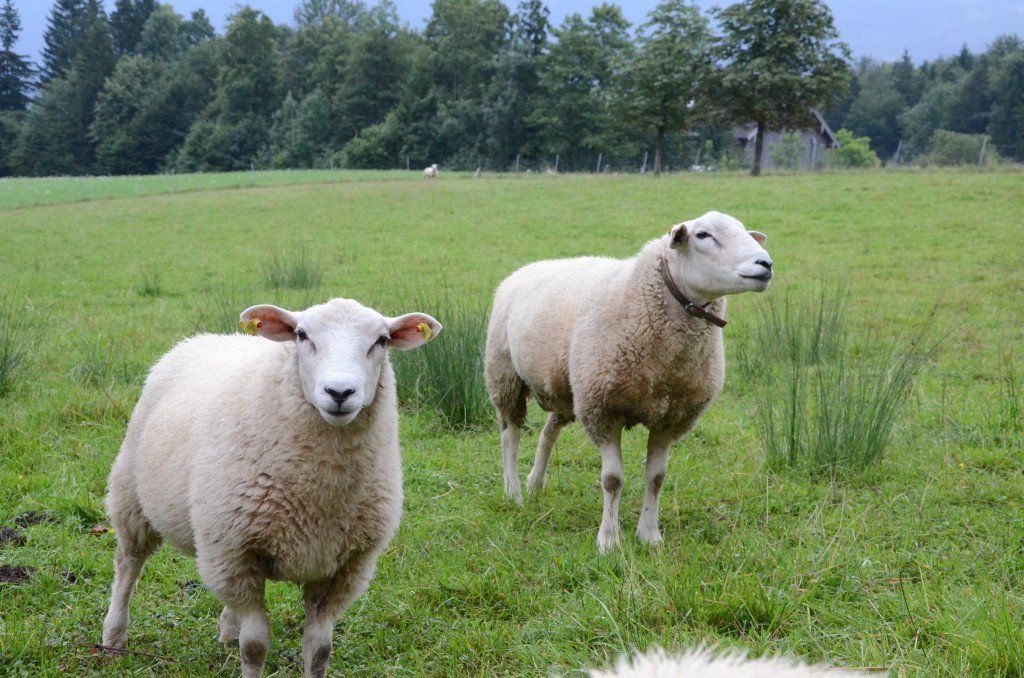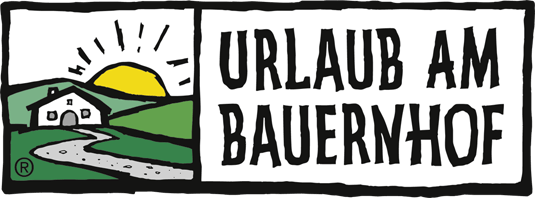Animals on the farm
The beginning of agriculture began in the Neolithic, when the hunters and gatherers gradually settled down. After they first planted crops, the keeping of farm animals soon followed. It all started with wild sheep and Bezoar goats, later pigs, cattle and horses were added.
Scientists suspect that the arable farmers first caught young animals that were easier to get used to living with humans. Their domestication went hand in hand with their taming. This meant that in captivity they did not reproduce according to the rules of natural, but man-made artificial selection.
As a result of this influence on the organism, there were physiological and morphological changes which were genetically fixed over time and which were the prerequisites for purposeful breeding. The resulting breadth of variation in the animals can also be seen in the various breeds that can be found on the farm today.
For example, the cows differ in their coat of hair or in the fact that some give more milk and others - like Charolais or Limousin - more meat. In addition to the old cattle breeds, such as the gray cattle or the Murbodner, modern breeding results emerged, including the Fleck- and Braunvieh. A characteristic of specially bred farm animals may also be that they are well adapted to their natural environment. Examples are highland cattle, the Scottish Galloway or Aberdeen Angus.
Of course, the other animals on the farm are also characterized by different breed characteristics, but also within a breed by different types. There are thoroughbred, cold-blooded and warm-blooded horses, the division of which depends on their temperament and physique and has nothing to do with their temperature, which is 38 degrees Celsius for all of them.
The thoroughbreds are a breed that is aimed exclusively at improving the speed of the animals in order to allow them to take part in horse races. Thoroughbred stallions or mares are therefore not intended for agricultural purposes.
Warm-blooded animals, on the other hand, are horses that are the result of a cross between country breeds and thoroughbreds and are suitable for both riding and draft horses. A heavy body and a calm demeanor characterize the cold-blooded horses, which are ideal for powerful work such as pulling wood.
When the first sedentary farmers began to tame and domesticate animals, this brought them many advantages. With the dung from the cattle, they could improve the quality of the arable land and feed on meat in the event of crop failures. In addition, the draft animals and plowed animals made the laborious work of cultivating the fields easier.
With the beginning of industrialization, life on the farm changed significantly, which was initially geared towards self-sufficiency. Machines such as tractors took over the work of draft animals, inventions such as milking systems for cows relieved the farmers and ensured greater yields and the proportion of the population that had to be supplied with food rose steadily. The consequence of this development was a permanent enlargement of farms, which expanded massively from the mid-1950s and finally led to factory farming on an unimagined scale.
But not all farmers followed this trend in large agricultural industries, some of which were also not afraid to resort to scandalous means such as the use of antibiotics to increase profits. A look at the alpine region of Austria around Lake Wolfgang, for example, shows agricultural production from a different, and indeed positive, side, because there are numerous small farms that have dedicated themselves to regionally anchored, environmentally conscious and natural management of their businesses.
A prime example of this is organic sheep breeding on the FISCHERGUT hereditary farm. This is located at an altitude of 540 m in Radau, a district of St. Wolfgang, which, along with other cities such as Bad Ischl, is a popular holiday destination in the Salzkammergut. The high quality and originality of the products of the FISCHERGUT company not only testify to numerous seals of quality such as the "Austria Bio Garantie" or the label "Gutes vom Bauernhof", but also their great demand in the near and far surroundings. And of course no genetic engineering is used on this ecologically exemplary farm.
For 30 years the top maxim of the FISCHERGUT company has been the rule of "low grow", i.e. animal welfare that deliberately refrains from artificial growth acceleration and instead relies on natural rearing without any chemicals. The sheep on the estate spend almost the whole year on unfertilized pastures, feed exclusively on fresh grass and plants and only come to the stables in winter, when ice and snow cover the feeding grounds. And even during the cold months, the animals are only supplied with ecologically unpolluted hay from their own farm.
In order to be able to run an organic farm in such a way that it rightly deserves this name, it requires a lot of commitment from the farmers as well as in-depth knowledge in the areas of ecology, nutrition and behavioral psychology of animals. A visit to such an estate should therefore be particularly interesting for city dwellers, because here you can not only enjoy the original natural idyll, but also learn a lot of interesting facts from the knowledgeable and hospitable farmers.
For example, they clarify the true background of a headline from last year that caused a lot of excitement among holidaymakers and said that "killer cows" were terrorizing hikers in Austria. In fact, it is not about "evil" creatures that, as reported, attack vacationers for no reason, but about animals on the pasture who want to protect their offspring. At the same time, visitors to the farm receive instructions on how to behave carefully in such dangerous situations. One piece of advice is not to look straight in the eyes of angry cattle. You should also not be frightened and under no circumstances should you try to stroke the calves.
Since the harmony between humans and nature is increasingly diverging in today's modern times of technology and urbanization, it makes perfect sense for children and young people to get to know life on a farm that treats the environment responsibly. And that there is not only work and a lot to learn on this, but also joyful highlights, for example witnessing the birth of a lamb on the FISCHERGUT in Wolfgangthal. The opportunity to marvel at this wonder of nature is from December to March, when the ewes, which are pregnant only once a year, are born.
So why not spend a holiday on an eco-farm like the FISCHERGUT, regardless of the season, because each one has its own charm to enrich the heart, senses and soul?













